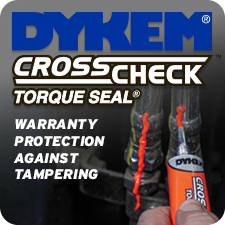Exploring the SPA
Making sense of special pricing agreements
by Frank Hurtte
I may be a dangerous man – I’m writing about SPAs. The previously unwritten truth: The industry-wide use of SPAs has given rise to a whole new bit of distributor sales strategy. If you’re not tuned into it, you are in peril and working at a disadvantage.
Does our industry have a deep, dark secret so taboo no one has worked up the courage to write about it? Based on a couple of recent conversations, this seems to be the case. After a talk at a distributor workshop a few months ago, somebody asked me if I knew of a good resource on Special Pricing Agreements (SPAs). Thinking there would be dozens of articles on the topic, I did a quick Google search and realized I was in trouble. The only mention of distributor Special Pricing Agreements was an offhand comment I made on a blog a year ago. Maybe this is a taboo subject. But I believe it’s something we need to discuss. Here’s why:
Distributors in our industry report a virtual explosion in SPA usage. One distributor related that his organization went from a couple dozen SPA agreements back in 2005 to over 300 today. And they continue to mount up. I believe some of these agreements were the result of the economic turmoil of a few years ago and others come as a vehicle for driving strategic sales.
Here’s how they work. Manufacturers offer their distributor partners pricing which is better than normal distributor levels. These fall into three basic categories:
- Across the board sub-distributor pricing on everything
- Lower prices for a specific customer or customer type
- Lower pricing on a couple of products from their catalog
Manufacturers offer these agreements for a variety of reasons. Obviously, there are times when manufacturers turn out to be poor negotiators and find themselves manipulated into providing deep discount pricing. Research into pricing strategies around the industry indicates a few of these still exist, but for our discussion, let’s focus on well-thought-out strategies with a purpose.
Why SPAs are needed in the market
For the past decade, we’ve seen dozens of mergers, buyouts and acquisitions. Each time one manufacturer buys another, they also purchase a channel to market. One recent acquisition brought the buyer a cool 4,000 additional distributor organizations. The new owner faces the issue of sorting through hundreds or even thousands of complex business relationships. The manufacturer realizes they’re “over-distributed” but truly understanding the street level reality in hundreds of locations takes time; mistakes can be costly.
Every distributor has a set of loyal accounts with deep connections. Research indicates these accounts will stay with the distributor if the manufacturer severs the
relationship. A mistake puts sales volume and market share in jeopardy. Sorting out the situation of account ownership takes time. Wholesale firing of distributors risks existing business. In an Old West free-for-all where distributors test one another’s accounts with special service offerings and price-based attacks, the unfocused channel activities create massive channel conflict issues and long-term headaches for the supplier.
SPAs solve other issues in the manufacturer’s distribution channel. State laws put into place to protect small businesses from abusive franchise partners create legal issues when distributors are fired. This lengthens the process for removing distributors that don’t quite fit the long-term plan. Yet during the months and sometimes years required to “rationalize the channel,” market control is important to the manufacturer.
SPAs applied to Market Issues
Special Pricing Agreements provide a mechanism for gaining market-specific channel control. Setting up an SPA allows the manufacturer to assign accounts to the distributor of choice without disrupting overall channel policy. In markets with multiple distributors, this action provides the manufacturer with a tool for improving line value. Let’s illustrate this comment.
Four Eastern wholesalers are authorized distributors for the Ace Acme Company. Typically, each of the four distributors serves a different market segment. Conflict occasionally raises its ugly head, but mostly things work smoothly. Then one of the distributors decides to expand its market focus (a survey from 2010 showed 72% of industrial distribution sales managers had that thought). Suddenly, distribution salespeople are offering discounts to the other guy’s customer base in hopes of building volume outside their home segment. The incumbent matches the discounted level; nothing changes except the price level. Purchasing agents cackle and roll in
demonic laugh, margins are eroded, profitability decreased, and salespeople who provide value shift their efforts to another product line, one with higher margins and less after-the-sale competition.
Some manufacturers simply let their channel slug it out; it’s a Darwinian survival-of-the-fittest thing. While I lack scientific data, anecdotal evidence points to diminished distributor sales activity when this happens. Orders are processed, logistics provided and all the rest, but the real selling stops. Instead, distributors instruct their sales teams to target other products. Proactive selling with new applications and new demand creation by the distributor drops off to nothing.
Savvy suppliers use SPAs to minimize cross-distributor pricing conflicts. By providing the distributor responsible for generating the business a “special” price, they provide protection against extreme margin degradation. They encourage proactive sales activities such as joint targeting and quarterly market plans. The manufacturer develops a closer customer relationship, builds customer intimacy (and everyone lives happily ever after). The problem, just like all things human, is that poorly executed plans often create new issues.
Common issues
Please note as we worked our way through the past scenarios, we glossed over a lot of detail. We assumed there were no legal issues. We won’t list them here, but be warned some of this borders on restraint of trade.
Our discussion made the conjecture that the manufacturing supply partner correctly understood the commercial situation at each account. Often this is not the case. One can almost conjure up wise old Solomon, majestically seated on a jewel-encrusted throne, scratching his head in bewilderment as a string of competitive distributors, agents and purchasing guys testify to conflicting stories. Real life exercise of SPAs has become as clouded as a steam bath, and just as sticky.
As I said in the introduction of this article, the industry-wide proliferation of SPAs has given rise to a whole new distributor strategy. If you’re not aware of it you are at a great disadvantage. Here are few points to spur your thinking. some manufacturers judge distributors by their use of SPAs
Are you a company with strong sales processes? Is yours an organization with a well-defined system for presenting and being paid for your value? Do you avoid price cutting by building packaged solutions? Based on our observations, some supply partners may be questioning the aggressiveness of your selling efforts. No, really.
Because so many of their distributors are bringing them requests for Special Pricing Agreements daily, weekly, on a regular basis, your lack of said requests raises an
eyebrow. Can you possibly be seeking out new
opportunities without the request for new SPAs?
Are SPAs a new form of exclusivity?
One very astute distributor owner called SPAs “the new exclusivity.” Once his team can convince the manufacturer’s local team to give them an SPA for an account, all competitors are effectively locked out. The supplier’s local team then turns a deaf ear to requests for joint calls, technical support or mutual action plans from any competitive distributor. This is as close to exclusivity as a wholesaler can have in most distribution plans.
When you consider all of the advantages, one would imagine the new best practice in distributor selling involves a strategy to take customers into an SPA as soon as possible. If the customer is well established with your organization, getting an SPA may be relatively straight forward. If the customer is in the early development stages, securing an agreement puts your brand on the future business. One caveat which can crater your growth plans comes when another distributor has already put their “brand” on your target customer.
Breaking the other guy’s protective shell
We’ll turn the table. This time, you’re on the outside looking in. Your sales team has identified a high potential account. Gradually, using hard work, strong service
and knowledge of the industry, they’ve established a presence. As they expand their work, an opportunity for tens of thousands of dollars is identified. The product used does not come from one of your supply partners, so you pick up the phone to set up a joint call to start the conversion. But the call has an unexpected outcome. You hear, “Sorry, Charlie, that account belongs to another distributor.”
You are making progress at the account in question. The other guy is getting less than 10% of the available business. But, your progress is at a standstill. You have three options: Find a new supply partner, which has ramifications with inventory, product training, support and logistics. Ignore the potential business and find other
opportunities. Or, find a way around the SPA.
The most common approach is to ask a friendly contact at your customer to officially request that pricing status be shifted to you. Our research indicates aggressive distributors have a draft letter prepared for just this type of situation. Some go so far as to provide the letter ready for the customer to sign, and they take care of the rest.
Upon receiving a letter like this, common practice in the manufacturer world has the local sales team make a phone call to the customer. They confirm the customer actually signed the letter, ask a few rudimentary questions about “reasons for switching,” then move the SPA.
The mechanics of the Special Pricing Agreement
SPAs come in two packages. The oldest and broadest is an “into stock price.” These are old school. Some industries have used this process for years. “Into stocks” create issues with pricing process and in many industries have led to further erosion of price levels. Further, these are very difficult to police. So, once an “into stock” is established, it becomes the new market price.
Rising in popularity is an agreement that uses a ship and debit approach. Here, the distributor buys inventory at the normal price level, and once the SPA sale (and shipment) is made, they submit a request for a credit (debit) to the manufacturer.
Two complaints revolve around the ship and
debit format:
- The supply partner holds the distributor’s money until the sale is made. This inflates inventory values. Further, some manufacturers take their sweet time in processing the credit. We have heard reports running up to 70 days, again creating financial issues. Best practices revolve around a turnaround of 30 days.
- The plans are hard to manage and often require too much staff time. Distributors must have technical and process competence to make these agreements work. One industrially focused automation distributor related a story of $13,000 lost to poor bookkeeping when the plan was done without the right oversight and process.
This isn’t the end, it’s the beginning
Hopefully, this isn’t the last bit of SPA training you receive. Discussions with wholesalers and supply partners point to increasing use of the Special Pricing Agreement. This opens the door to a whole new set of best practices. Things like how often should they be reviewed, the proper level of margin protection and how to automate the
process are being considered right now.
If you have questions, comments or a just want to share a best practice, give me a call.

Frank Hurtte, founder of River Heights Consulting,
brings 28 years of distribution industry experience
and a lifetime in sales. Reach him at (563) 514-1104
or frankehurtte@riverheightsconsulting.com.
This article originally appeared in the May/June 2012 issue of Industrial Supply magazine. Copyright 2012, Direct Business Media.














